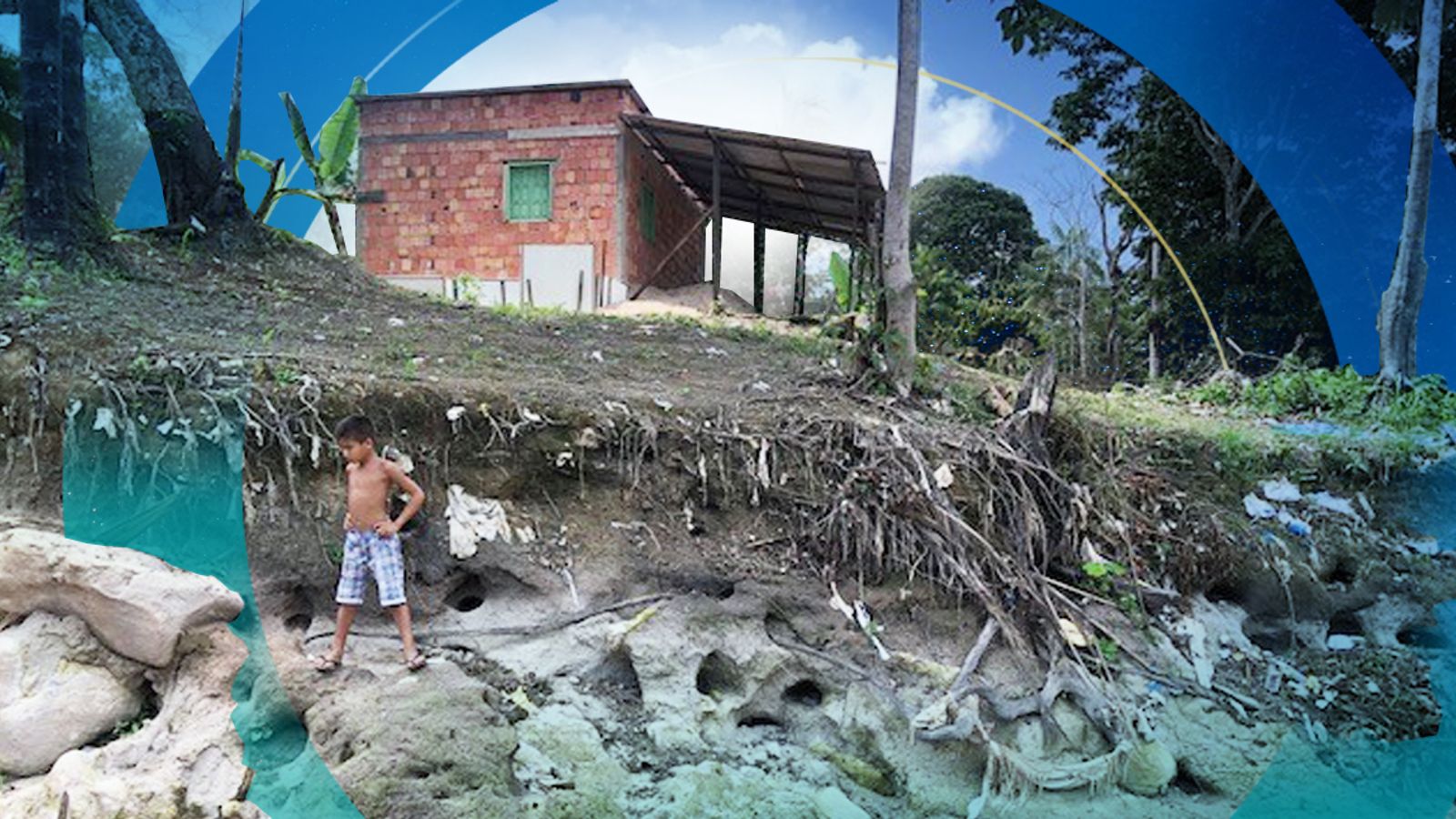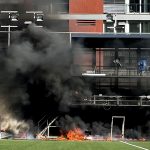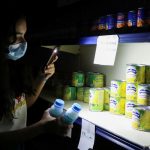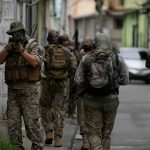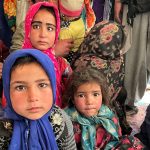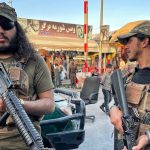There are 148 small rivers that criss-cross the city of Manaus in the heart of the Amazon rainforest. The majority of them are struggling for breath right now, due to pollution.
In the northwest outskirts of the city it’s not just what you see, it’s what you smell. Industrial and human waste flows into this tributary of the Rio Negro.
On the banks there is a mixture of rubbish which has become intertwined with the once-clean river environmental campaigner Jo Farah says he swam in as a child.
But that was 20 years ago. For the last 15 years, as mankind has encroached into the forest, the river now flows with a film of pollution covering it.
Mr Farah’s life mission is to save the waterways of Manaus. He tells us it’s heartbreaking, because they are not only destroying trees here, they are poisoning rivers too.
He walks us to witness the cruel contrast of a river straining to breathe against streams of rubbish and waste.
Along the bank, we meet seven year old Murillo. Fishing for fun, he can’t have the same experience as Mr Farah did as a child and paddle in the river.
Brazil: Nine firefighters killed and one injured after cave collapses during rescue exercise
COP26: Above the Amazon – why the vital carbon store could disappear within a few generations
Jair Bolsonaro: Brazil senators recommend president faces charges over COVID policies
Ten minutes later, Murillo still hadn’t got a catch. Fish find it hard to thrive in the choking river.
Please use Chrome browser for a more accessible video player
Much of the pollution is from uncontrolled housing settlements, where the desperately poor find any method they can to secure anything that could be described as a home to the land.
Professor Marcus Castro, a professor of urban geography in Manaus, showed us some of the villages.
Understandably for people like mother and daughter Rosa and Geisa, it is daily survival they care about, not the fate of the rainforest or fears of climate change.
Rosa told us every day their situation gets worse, and her government will do little to help.
Professor Castro says it’s too easy to blame the poor for a problem created by industry and not helped by national leaders.
“The problem here is there is such inequality, and no proper planning so they have no choice,” he told us.
And that is the real problem. These settlements are eating into the forests causing yet more trees to be lost. And that, combined with the uncontrolled spread of industry, is causing huge damage to the rainforest.
Please use Chrome browser for a more accessible video player
Secondly, the industrial sites and the homes of the poor have no sewage or waste infrastructure and therefore much of it goes straight into the rivers.
But Mr Farah is not prepared to let the rivers die. He took us to a forest on the edge of the city where he and his team are planting new trees on the banks of one of the 148 igarapes (a watercourse in the Amazon) he’s determined to preserve.
As he plants he tells us: “This is my first tree planted here.”
The first of many in a desperate attempt to revive the land he reveres so much.
For full coverage of COP26 watch Climate Live on Sky channel 525.
Follow live coverage on web and app with our dedicated live blog.
Get all the latest stories, special reports and in depth analysis at skynews.com/cop26
